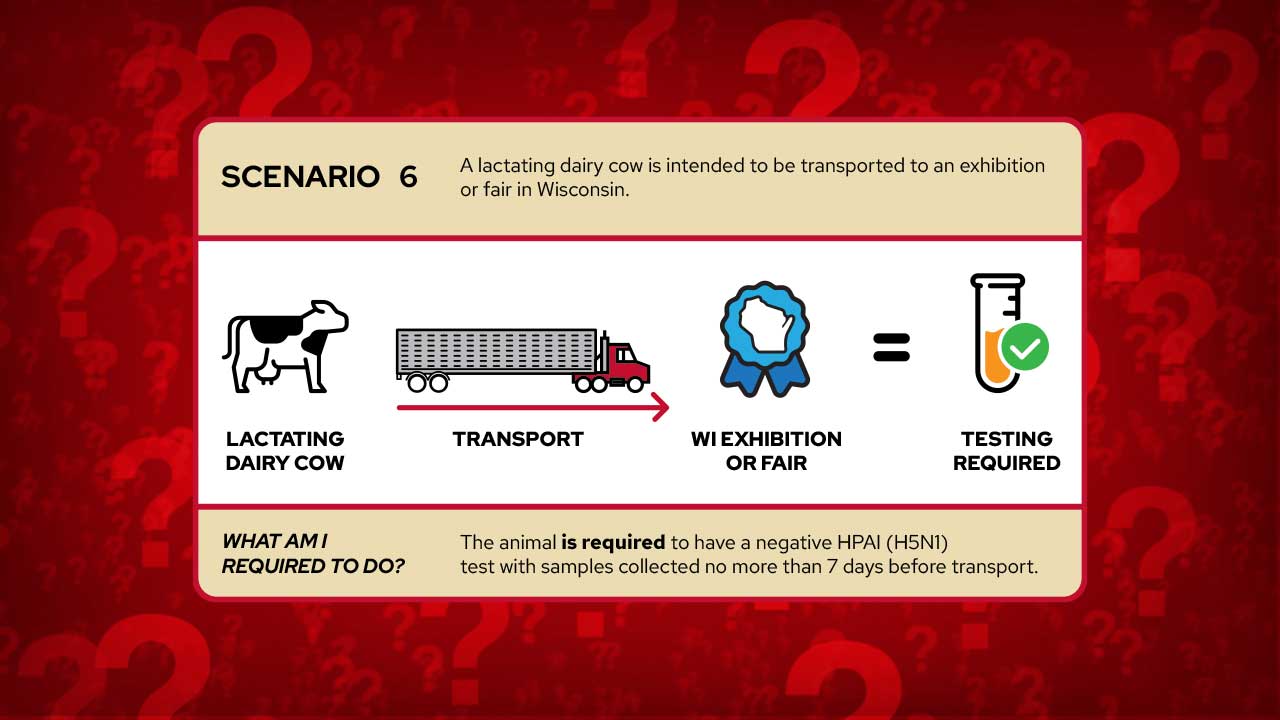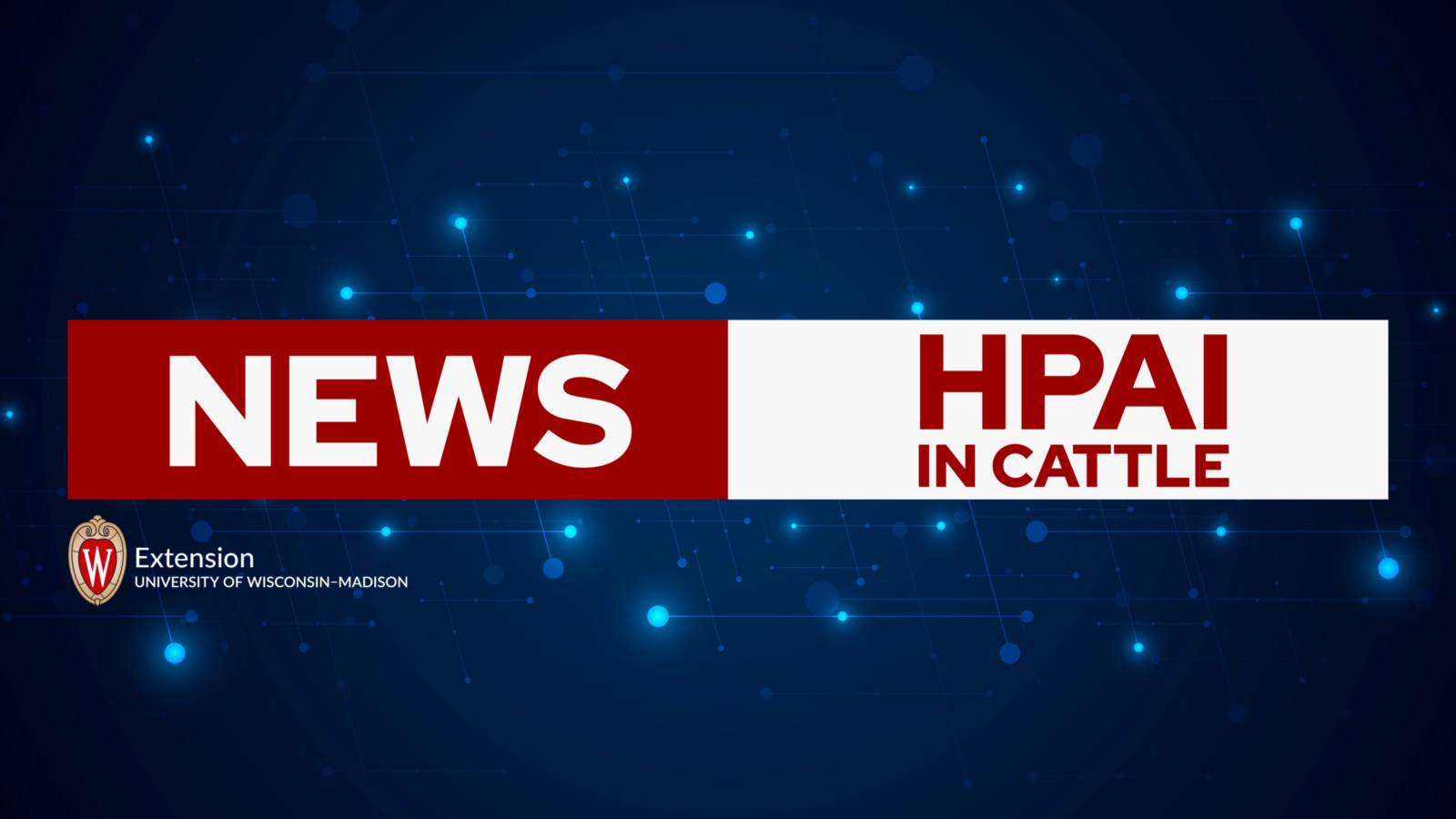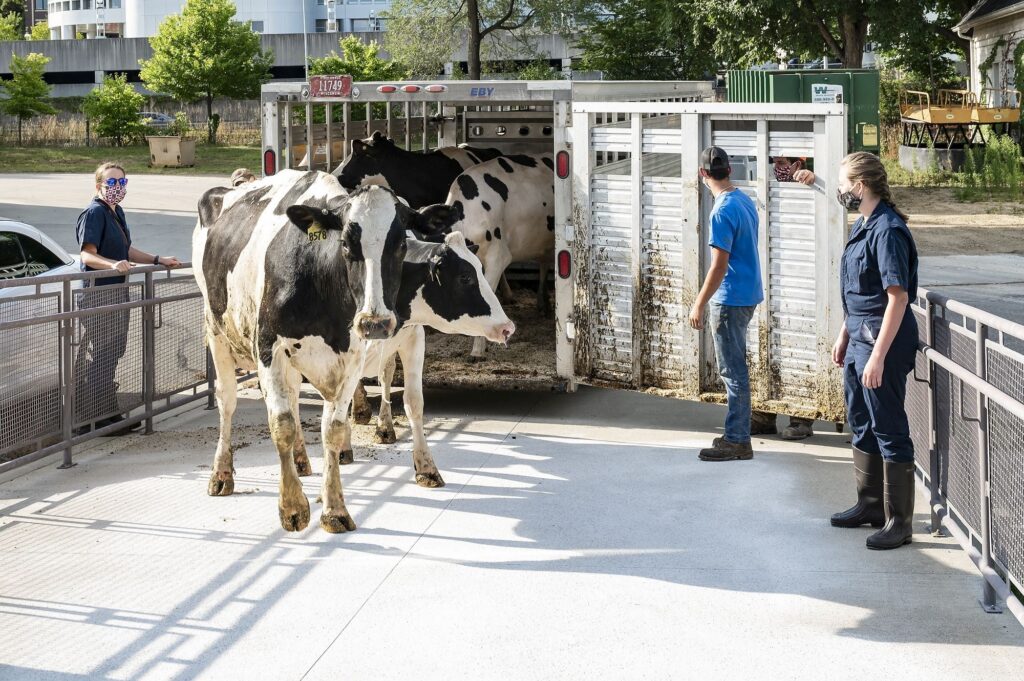Effective as of June 19, 2024, Wisconsin Department of Agriculture, Trade and Consumer Protection (DATCP) now requires that lactating dairy cattle “must receive a negative test for Influenza A virus at an approved National Animal Health Laboratory Network (NAHLN) laboratory prior to moving to fairs or exhibitions. Samples must be collected no more than 7 days prior to movement to the fair or exhibition. Testing is available to producers at no cost through USDA APHIS at NAHLN laboratories. Producers may also apply for reimbursement of shipping and veterinary fees for collection of samples.” This order will remain in effect until 60 days after the last detection of H5N1 in U.S. cattle herds. More information about this order can be found here.

UW-Madison Extension Dairy Program Area created a visual scenario-based factsheet to navigate current conditions of the interstate transportation federal order and WI intrastate requirements, as well as a HPAI resource page. Dairy producers should work with their herd veterinarians to collect and submit samples.
Wisconsin DATCP Division of Animal Health (DAH) provided several biosecurity recommendations for those participating in exhibition shows and fairs. Brief highlights of this information and our added examples (in italics) are below:
Exhibitor Biosecurity
If dairy producers choose to participate in shows and exhibitions, consider:
- Isolating animals that return from a show or exhibition from the home herd for at least two weeks
- Testing animals that return from a show or exhibition prior to reintroduction to the home herd
- Avoiding the use of shared equipment, especially milking equipment between cows from different herds (ex. Milking claws, dip cups, feed and drinking buckets, etc.)
Dairy Event Biosecurity Recommendations
If lactating dairy cattle are exhibited, DAH asks event coordinators to consider:
- Reducing the days cattle are on site to less than 72 hours
- Limiting commingling of cattle from different herds (avoid nose to nose contact of dairy cows)
- Limiting commingling of lactating and nonlactating cattle
- Preventing commingling of different species
- Reducing spectator contact with animals on exhibit
- Create a biosecurity plan that reduces risks of spreading disease between exhibitors, including cleaning of any commonly used equipment between uses (ex. Milking claws, dip cups, feed and drinking buckets, etc.)
- Making a plan for collecting, treating, and disposing of milk collected during the exhibition as well as cleaning between use
- Do not house/stall lactating dairy cows nose-to-nose if possible.
Stay Informed
This situation is constantly evolving as more information becomes available. Stay up to date with the most current information by visiting and subscribing to email alerts from USDA, NMPF, WI DATCP, and CDC websites.
Together, we succeed by monitoring animals and people, practicing biosecurity protocols, and staying accurately informed.






